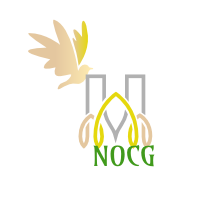Laos was a tributary of Vietnam and the Ryky Kingdom paid tribute to both China and Japan. Local ethnic minorities were not regarded as foreign countries, but were governed by their own leaders (, tusi), subject to recognition by the emperor, and were exempt from the Chinese bureaucratic system. Ang Japanocentrism ay isang hanay ng mga paniniwala na kung saan ang pinakamahalaga ay ang Japan ay, o dapat ay, ang sentro ng mundo. 2 on a question. Nakuha noong: Oktubre 08, 2019 mula sa Iyong Diksyon: halimbawa.yourdictionary.com. "God king" kung ituring ang mga hari na may katangian ng diyos o hari na bilang na namumuhay na diyos sa TSA. Sinocentrism - Edukasyon - 2023 Kaisipang Asyano Katangian Ng Sinaunang Namumuno Sinocentrism - Blogger Kaisipang asyano katangian ng sinaunang namumuno sinocentrism divine origin devaraja cakravartin. Soon after the weakening of Yuan dynasty, Goryeo retook their lost territories from the Yuan dynasty by military campaigns and regained her sovereign rights. Sinocentrism. Kaisipang Asyano | PDF - Scribd "Trung Quc" was used as a name for Vietnam by Emperor Gia Long in 1805. The situation was complicated by the fact that some tributary states had their own tributaries. Ang una, tulad ng nakita na natin, ay tumutukoy sa paraan ng pagtingin sa mundo kung saan ang natitirang mga kultura ay sinuri sa pamamagitan ng kanilang sariling filter. When Buddhists had influence in the court, such as in the minority-led Yuan dynasty, they successfully persuaded the imperial governments to censor and destroy Daoist texts. Ethnocentrism: kasaysayan, katangian, uri, halimbawa The Chinese considered themselves to be "all-under-Heaven", ruled by the emperor, known as Son of Heaven. [52], Liu Ji, one of the key advisors of the Ming-dynasty founder Zhu Yuanzhang, generally supported the idea that while the Chinese and the non-Chinese are different, they are actually equal. Isinasaalang-alang ng may-akda na ang etnocentrism ay isang kababalaghan na katulad ng iba pang mga ideya tulad ng geocentrism o anthropocentrism, kaya naisip niya na ito ay isang ilusyon. SINOCENTRISM paniniwala ng mga Tsino na ang China ang pinakasentro ng daigdig. WORLD MUNDO SENTRO DAIGDIG NAKALIBOT BANSA Author TagalogLangPosted on February 14, 2021February 14, 2021Categories MGA ARALIN (), which means "Over mountains and rivers of the South reigns the Emperor of the South". However, they were governed by their native leaders called tusi, subject to recognition by the Chinese court, and were exempt from the Chinese bureaucratic system. Sinocentrism Ang ( ) ay anumang ideolohiya na pampulitika na etnocentric na tumutukoy sa Tsina na maging sentral o natatanging kamag-anak ng ibang mga bansa. Art, 28.01.2021 03:55. Archeological evidence of the multiple origins of the Chinese people was suppressed. [17] Thanh nhn or ng nhn were used to refer to ethnic Chinese by the Vietnamese while Vietnamese called themselves as Hn dn and Hn nhn in Vietnam during the 1800s under Nguyn rule. The Jinn Shtki provided a Shinto view of history stressing the divine nature of Japan and its spiritual supremacy over China and India. Chinese nationalism, in contrast, is a more modern concept focused primarily on the idea of a unified, cohesive, and powerful Chinese nation, as one of the nations of the world. The Sinocentric tribute and trade system provided Northeast and Southeast Asia with a political and economic framework for international trade. Ang termino ay tinukoy sa modernong anyo ng American sociologist na si William G. Sumner, na unang inilapat ito sa larangan ng agham panlipunan. In the Tokugawa era, the study of Kokugaku () arose as an attempt to reconstruct and recover the authentic native roots of Japanese culture, particularly Shinto, excluding later elements borrowed from China. As a result, China adopted the Westphalian system of equal independent states. Halimbawa, ang ilang mga nag-iisip ng Frankfurt School ay nagtatag ng etnocentrism bilang anumang uri ng pag-iisip na naiiba sa pagitan ng sariling grupo at mga tao sa labas nito. AP 7 Lesson no. 8: Mga Kaisipang Asyano sa Pagbuo ng Imperyo: - SlideShare [citation needed]. Ano ang ibig sabihin ng Sinocentrism? | Panitikan.com.ph Cultural Sinocentrism refers to the tendency to regard neighboring countries as mere cultural offshoots of China, and to deny the uniqueness or validity of surrounding countries as separate cultures. The Vietnamese are considered as belonging to the Yue. The defeat of the Imperial army by a small Anglo-French military force during the Second Opium War, coupled with the flight (and subsequent death) of the emperor and the burning of the Summer Palace was a shocking blow to the once powerful Qing Dynasty. A second group of southeastern barbarians covered countries like Sulu, Malacca, and Sri Lanka. Classical Chinese (Ch Hn) was adopted as national writing system since the Triu dynasty. Wei Chn, On Ricci's Fallacies to Deceive the World (Li shuo huang-t'ang huo-shih p'ien), quoted in: George H. C. Wong, China's Opposition to Western Science during Late Ming and Early Ch'ing, Zhou Songfang, "Lun Liu Ji de Yimin Xintai" (On Liu Ji's Mentality as a Dweller of Subjugated Empire) in, Lu Xun [] (1981), Lu Xun Quanji (, Collected Works of Lu Xun), 16 volumes, Renmin Chubanshe, Beijing, HuaYi distinction Conceptualisation of the HuaYi distinction in the Sinosphere. In 1657, Tokugawa Mitsukuni established the Mito School, which was charged with writing a history of Japan as a perfect exemplar of a "nation" under Confucian thought, with the emphasis on unified rule by the emperors and respect for the imperial court and Shinto deities. [2] However, the concept of Sinocentrism became unpopular following the humiliation of China by Western and Japanese powers in the 19th century. to 25 C.E., as the people of Wo, who are divided into more than one hundred states, and who bring tribute at fixed intervals. The Book of Later Han (, , Hou Hanshu), composed in the fifth century by Fan Ye and covering the Eastern Han period from 25 to 220 C.E., relates that in 57 C.E. Advertisement Language links are at the top of the page across from the title. A traditional Sinocentric attitude was evident in the Chinese reaction when the Jesuit Matteo Ricci published the first map of the world in Chinese in 1584, at the request of the governor of Chao-k'ing, who printed copies for his friends: Lately Matteo Ricci utilized some false teachings to fool people, and scholars unanimously believed himtake for example the position of China on the map.
Uva Mcintire Double Major,
Neighbours Spoilers: Nicolette Baby,
Tudor City Famous Residents,
Articles S




